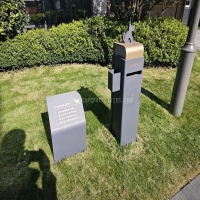Welcome to the website for landscape facilities products and knowledge.
What are the key considerations for ensuring the bin’s accessibility in crowded spaces?
Ensuring bin accessibility in crowded spaces is crucial for maintaining cleanliness and promoting efficient waste management. Here are the key considerations to address:
1. Strategic Placement: Bins should be positioned in high-traffic areas such as entrances, exits, and near seating zones. Avoid obstructing pathways to ensure easy access.
2. Clear Visibility: Use bright colors or signage to make bins easily identifiable. Labels or icons can help users quickly recognize the correct bin for their waste.
3. Adequate Capacity: In crowded spaces, bins fill up quickly. Opt for larger or multiple bins to prevent overflow, which can deter usage and create litter.
4. User-Friendly Design: Choose bins with wide openings and foot pedals for hands-free use. Consider accessibility for people with disabilities, such as lower-height bins or tactile indicators.
5. Regular Maintenance: Frequent emptying and cleaning are essential to keep bins functional and hygienic. Overflowing or dirty bins discourage proper disposal.
6. Public Awareness: Educate visitors through signage or campaigns to encourage proper bin use. Clear instructions reduce contamination and improve recycling rates.
By addressing these factors, urban planners and facility managers can enhance bin accessibility, ensuring cleaner and more sustainable public spaces.
Related search:

Recommendation
Outdoor cat and dog feces trash can; Community pet trash can; Metal multi-color design